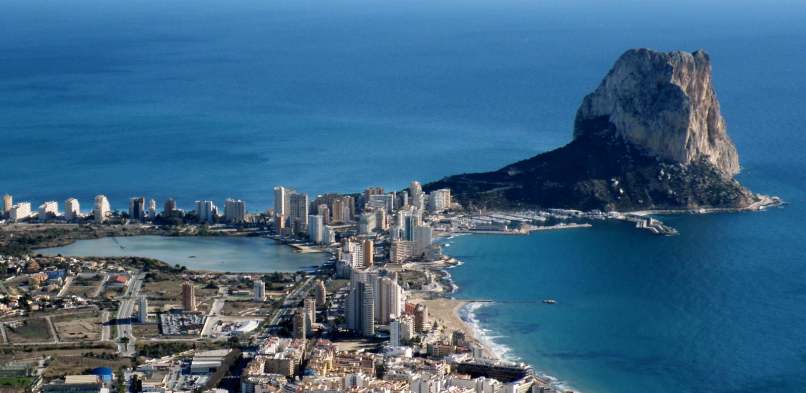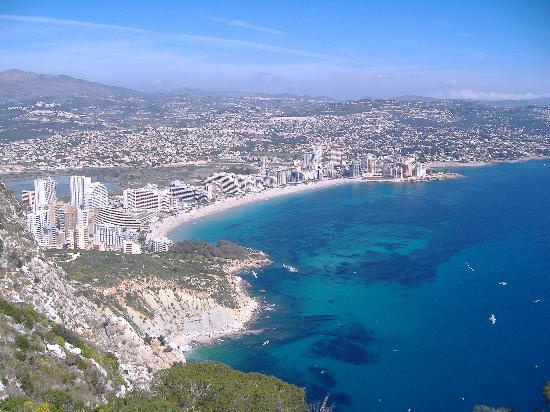Calpe
The small town of Calp ( Valencian, to December 4, 2008, Spanish Calpe) is located on the east coast of Spain, between Valencia and Alicante on the Costa Blanca. The place is a very popular tourist destination and many German, British, Swiss, and other foreigners spend their twilight years. In July and August, the city is inhabited by even up to 200,000 people. Close to the beach, a great number skyscrapers, but which - are almost uninhabited - except in the summer. The construction boom is strongly reminiscent of Benidorm. There are more than 60 settlements around the old town and the beaches of Calpe, known for this include Mary Villa, canuta (both southwest of the Old City), Tossal de Cometa, Grand Sol and Ortembach (all three north of the Salt Lake ).
History
The earliest archaeological finds indicate a settlement by the Iberians. Later - around the 3rd century - the Romans founded Colonia one at the foot of the Rock of Ifach. The Roman name was Calpea. During the Middle Ages the individual, scattered farmsteads were repeatedly attacked by pirates. The Ifach and the Torre del Moli (also called Moli del Morello ) therefore served as control points against the pirates. During the 20th century, Calp developed into tourist destination for natives and foreigners.
The 68 districts of Calp
Geography
Neighboring towns
Altea is located south and north of Benissa - along the main road N- 332 - of Calp. Along the road next to the sea towards the north lies Moraira.
Beaches
Calp, in addition to the two larger sandy beaches, which are called Platja Arenal Bol and Platja La Fossa, many small beautiful bays.
Ifach
The landmark of Calpe is the 332 m high Rock of Ifach (Spanish: Peñón de Ifach ). The rock is connected by a narrow strip of land to the mainland and is under protection. A hiking trail leads to the summit through a small tunnel to Carallot tip. The tunnel was built in the early 20th century by the then owner of the Peñón and should facilitate the ascent of the rock.
Salt lakes
Salt was used during the Middle Ages for the preservation and marketing of fish. Presumably, the salt lakes ( Salinas ) of Calp in antiquity originated and developed by alluvial salt water from the sea. The salt lakes developed over the centuries a significant flora and fauna that has adapted to the high salinity of the lakes. Today the lakes are mainly an attraction because of the many flamingos that live there. The main street of Calpe leads right past the Great Salt Lake. On the other side of the lake there are several high-rise buildings.
Baths of the Queen
The baths of Queen are also called Baños de la Reina. According to legend, they were built for a queen. However, it is believed that it is a kind of fish farm, which is connected to the sea. In the six subjects, different species of fish were held in order to feed the population. The Baños de la Reina were about built in the 4th or 5th century.
Attractions
- Ifach
- Salt lake with flamingos
- Old town
- Baths of the Queen
- Fish market at the harbor










